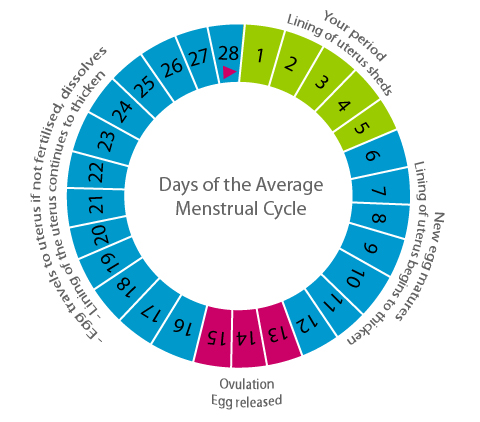
The menstrual cycle is a natural and necessary process that women go through each month. It involves a complex series of hormonal changes and physical events that prepare the body for possible pregnancy. Understanding your menstrual cycle can help you better manage your reproductive health and overall well-being.
Phases of the Menstrual Cycle
Phase 1: Menstruation
Menstruation, or the period, is the first phase of the menstrual cycle. It typically lasts for 3 to 7 days and involves the shedding of the uterine lining. During this time, women may experience cramps, bloating, and mood swings.
Phase 2: Follicular Phase
Following menstruation, the body enters the follicular phase. During this phase, the pituitary gland releases follicle-stimulating hormone (FSH), which stimulates the growth of follicles in the ovaries. These follicles produce estrogen, which helps thicken the uterine lining in preparation for implantation.
Phase 3: Ovulation
Ovulation is the most crucial phase of the menstrual cycle. It occurs when a mature egg is released from the ovary and travels through the fallopian tube. This typically happens around day 14 of a 28-day cycle, but it can vary. Ovulation is accompanied by an increase in luteinizing hormone (LH) and a slight increase in body temperature.
Phase 4: Luteal Phase
After ovulation, the body enters the luteal phase. During this phase, the ruptured follicle transforms into the corpus luteum, which produces progesterone. Progesterone helps prepare the uterus for pregnancy. If fertilization does not occur, the corpus luteum breaks down, and hormone levels drop, initiating menstruation.
Tracking Your Menstrual Cycle
Calendar Method
One way to track your menstrual cycle is by using a calendar. Start by marking the first day of your period as day one and continue tracking until the next period begins. Over time, patterns may emerge, allowing you to predict when your period will occur.
Basal Body Temperature Charting
Basal body temperature (BBT) charting involves taking your temperature each morning before getting out of bed. During ovulation, the body’s resting temperature increases slightly. Tracking these changes can help pinpoint when ovulation occurs.
Cervical Mucus Observation
Another method of menstrual cycle tracking involves observing changes in cervical mucus. As ovulation approaches, cervical mucus becomes slippery and clear, resembling egg whites. Monitoring these changes can indicate when fertility is highest.
Common Menstrual Cycle Irregularities
Polycystic Ovary Syndrome (PCOS)
PCOS is a hormonal disorder that affects women of reproductive age. It is characterized by enlarged ovaries with small cysts, irregular periods, and high levels of male hormones. PCOS may cause fertility issues and other health problems like insulin resistance and weight gain.
Primary Amenorrhea
Primary amenorrhea refers to the absence of menstruation by age 16. It may be caused by various factors, including hormonal imbalances, structural abnormalities, or genetic disorders. Medical evaluation is necessary to determine the underlying cause and appropriate management.
Dysmenorrhea
Dysmenorrhea is the medical term for painful menstrual cramps. While mild discomfort is normal, severe pain during menstruation may indicate an underlying condition like endometriosis or uterine fibroids. Treatment options include pain relievers, hormonal contraceptives, or surgery.
Maintaining a Healthy Menstrual Cycle
Diet and Exercise
Maintaining a balanced diet and regular exercise routine can contribute to a healthy menstrual cycle. Foods rich in iron, calcium, and vitamins can help alleviate symptoms of PMS and support overall reproductive health. Moderate exercise, such as walking or swimming, may also reduce menstrual pain and stress.
Stress Management
Chronic stress can disrupt hormonal balance and affect the regularity of your menstrual cycle. Engaging in stress-management techniques, such as meditation, yoga, or deep breathing exercises, can help reduce stress levels and promote hormonal harmony.
Regular Check-ups
Regular check-ups with your healthcare provider are essential for managing your menstrual cycle and reproductive health. Your healthcare provider can assess any concerns, provide necessary screenings, and offer guidance on birth control options or fertility planning.
Conclusion
Understanding your menstrual cycle is key to maintaining good reproductive health and overall well-being. By familiarizing yourself with the phases of your cycle, tracking changes, and seeking medical advice for any irregularities, you can take control of your menstrual health. Remember to prioritize self-care and reach out to healthcare professionals for guidance when needed.





